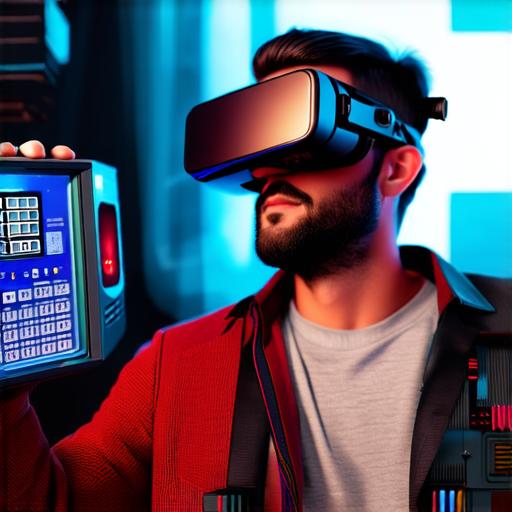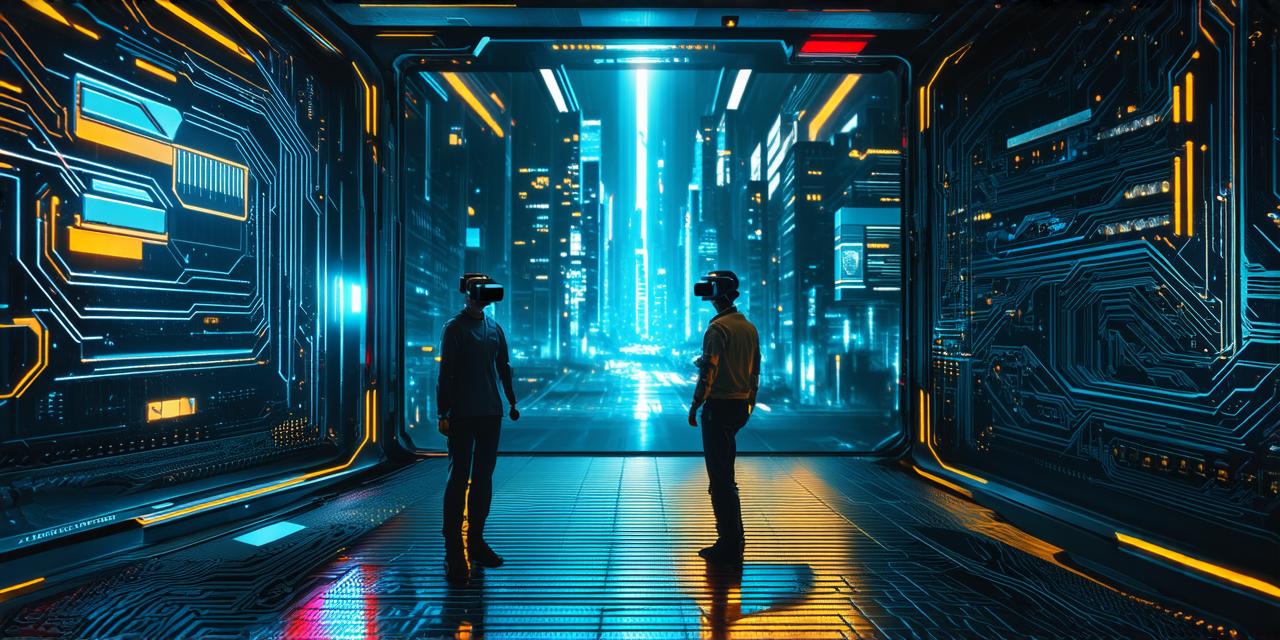The Origins and Evolution of Virtual Reality Technology
Virtual reality (VR) technology has come a long way since its inception. From the early days of 2D displays and wireframes to today’s sophisticated, immersive experiences, VR has revolutionized the way we interact with digital content.
The Beginnings of Virtual Reality: 1960s and Early 1970s
The concept of virtual reality can be traced back to the 1960s when computer scientists began experimenting with ways to create more immersive and interactive experiences for users. One of the earliest examples of VR technology was the Sword of Damocles, developed by Ivan Sutherland in 1968.
This system used a projector to display stereoscopic images on two screens mounted above the user’s head, creating a sense of depth and immersion.
Another pioneering VR researcher was Jaron Lanier, who coined the term “virtual reality” in 1973. Lanier’s work focused on creating more realistic and interactive environments for users, with the goal of enhancing their creativity and problem-solving abilities.
In the early 1970s, he developed a prototype system called the VR headset, which used two displays to create a stereoscopic view and allowed users to look around in a virtual space.
The Evolution of Virtual Reality: Mid-1970s to Early 1980s
Despite these early breakthroughs, VR technology remained largely experimental and underfunded until the mid-1970s. It was during this time that computer scientists and researchers began to develop more sophisticated algorithms for rendering three-dimensional graphics, as well as new input devices such as gloves and headsets to track user movements.
One of the most significant milestones in VR history was the development of the first commercial VR system, called the “Ivan Sutherland Computer” or simply “Sutherland,” by Ivan Sutherland’s company in 1978.
This system used a head-mounted display and gloves to track user movements, allowing them to interact with virtual objects in a realistic way.
In the early 1980s, VR technology began to gain more widespread attention as researchers at universities and research institutions around the world continued to develop new systems and applications. These included everything from military training simulations to educational games for children.
Virtual Reality Today: The Modern Era of VR Technology
Today, virtual reality technology has become increasingly mainstream, with a growing number of businesses and organizations using it for a wide range of purposes. From gaming and entertainment to education and healthcare, VR technology is transforming the way we experience and interact with digital content.
One of the most significant developments in VR technology in recent years has been the rise of high-fidelity displays and advanced motion tracking systems. These technologies have allowed for even more immersive and realistic experiences, with users able to move around freely in virtual environments without any wires or other constraints.
Another important development has been the growth of mobile VR technology. With the widespread availability of smartphones and other mobile devices, developers can now reach a much larger audience than ever before, allowing them to create games, apps, and other experiences that are optimized for smaller screens.
Virtual Reality in the Future: Where Will it Go from Here?
As virtual reality technology continues to evolve, there is no doubt that we will see even more exciting developments in the coming years. Some of the most promising areas of research include advancements in haptic feedback technology, which allows users to feel physical sensations in virtual environments, as well as improvements in eye-tracking and facial recognition systems, which could make VR experiences even more immersive and interactive.
In addition, there is growing interest in the potential applications of VR technology beyond entertainment and gaming. For example, researchers are exploring the use of VR for training doctors and other medical professionals, as well as for simulating complex engineering and design projects.
FAQs:
What was the first virtual reality system?
The first virtual reality system was the Sword of Damocles, developed by Ivan Sutherland in 1968.
Who coined the term “virtual reality”?
Jaron Lanier coined the term “virtual reality” in 1973.
What is the most significant milestone in VR history?
One of the most significant milestones in VR history was the development of the first commercial VR system, called the “Ivan Sutherland Computer” or simply “Sutherland,” by Ivan Sutherland’s company in 1978.
What is the future of virtual reality technology?
The future of virtual reality technology will depend on how quickly and effectively we can continue to innovate and push the boundaries of what is possible with this amazing technology. With continued research and development, there is no doubt that VR will continue to play a growing role in our lives, transforming the way we experience and interact with digital content.
What are some potential applications of virtual reality technology beyond entertainment and gaming?
Some of the most promising areas of research include advancements in haptic feedback technology, which allows users to feel physical sensations in virtual environments, as well as improvements in eye-tracking and facial recognition systems, which could make VR experiences even more immersive and interactive. Researchers are also exploring the use of VR for training doctors and other medical professionals, as well as for simulating complex engineering and design projects.

